In Rome, the National Gallery of Ancient Art at Palazzo Barberini will present itself, starting Friday, Oct. 8, 2021, with the new arrangements of the Sale del Cinquecento, from 12 to 18. The rooms have been completely renovated and rearranged with an intervention curated by Flaminia Gennari Santori with Maurizia Cicconi and Michele Di Monte, marking the conclusion of the redevelopment work on the main floor of Palazzo Barberini, according to a conceptual layout that began in 2017 with the refurbishment of the South Wing and continued with the rooms of the Seventeenth Century in 2019. “The intent,” explains Flaminia Gennari Santori, director of the National Galleries of Ancient Art, “is to return to the public an organic and easily readable itinerary, in a narrative exhibition structure that also highlights the history of the palace and its collections.” The renovation of the rooms involved the architectural structures, the lighting system, graphics and educational apparatus, with new explanatory panels and reasoned captions, in addition to the 42 works preserved here, to which are added a series of temporary loans from public and private collections, and which are arranged according to a better visibility that integrates and coordinates a chronological-geographical order with thematic moments and monographic insights.
For the occasion, the works have all been analyzed by the museum’s restoration laboratory, which has subjected some of them to conservation or restoration work. The new itinerary includes the entrance from theBernini lobby where visitors are welcomed by Antonio Corradini’s monumental Velata. Sculpted in 1743 during the artist’s Roman sojourn, the Vestal is shrouded in an impalpable veil, a symbol of the modesty and chastity required for the sacred role of priestess of Vesta’s fire, which allows the forms beneath to shine through. In her left hand she holds the sieve that, with the help of the goddess, enabled her to collect the waters of the Tiber, escaping death. The first work in the exhibition itinerary is the Galata, an ancient Roman sculpture belonging to the Barberini collection-a choice that was made to emphasize how the tour also includes the history of the palace and its owners. The statue, in its present appearance, is actually the result of an extensive makeover, probably desired by the Barberini themselves, and conducted on a mutilated Roman sculpture from the first century A.D., derived in turn from a Hellenistic monumental group datable to the first half of the second century B.C.
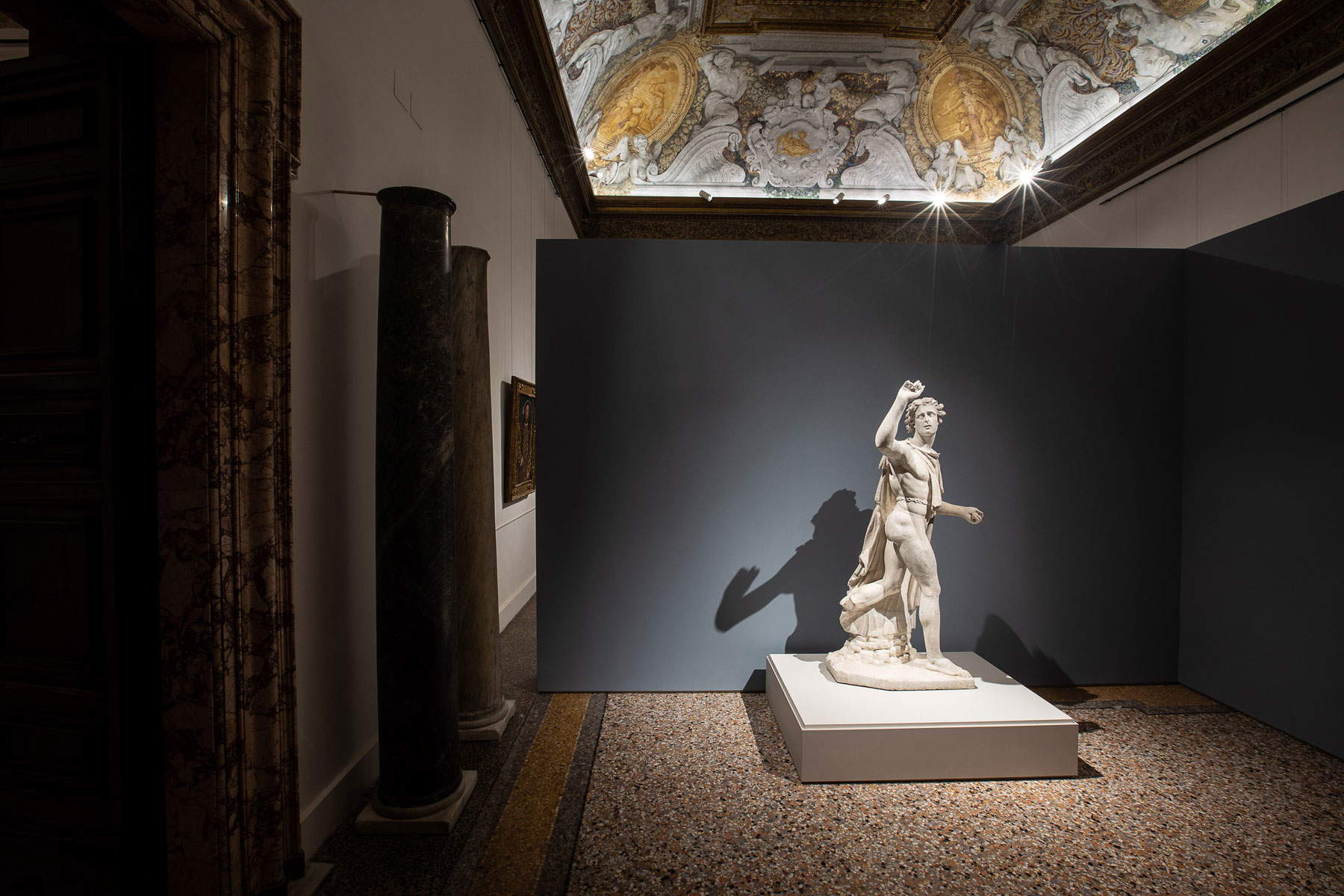
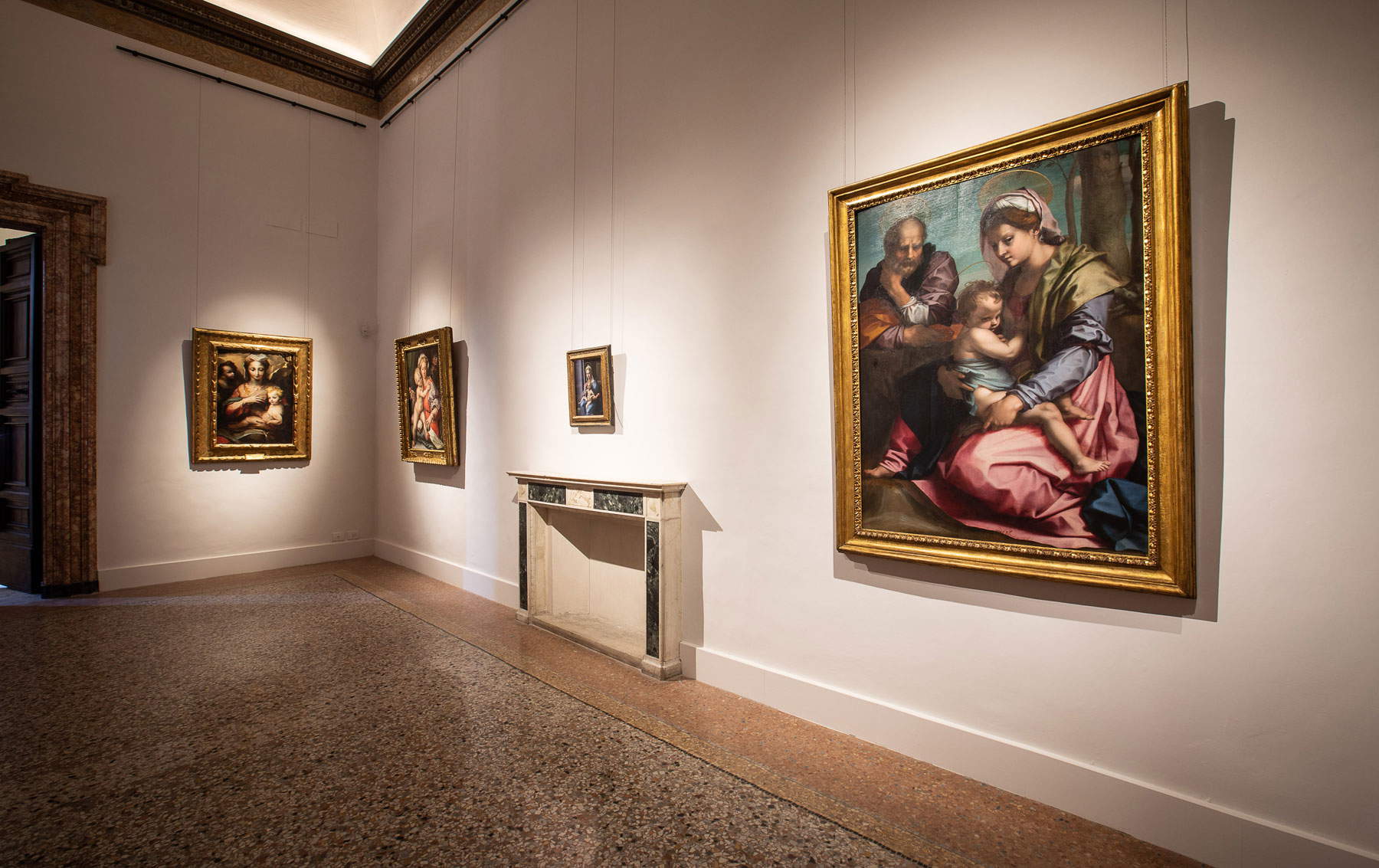
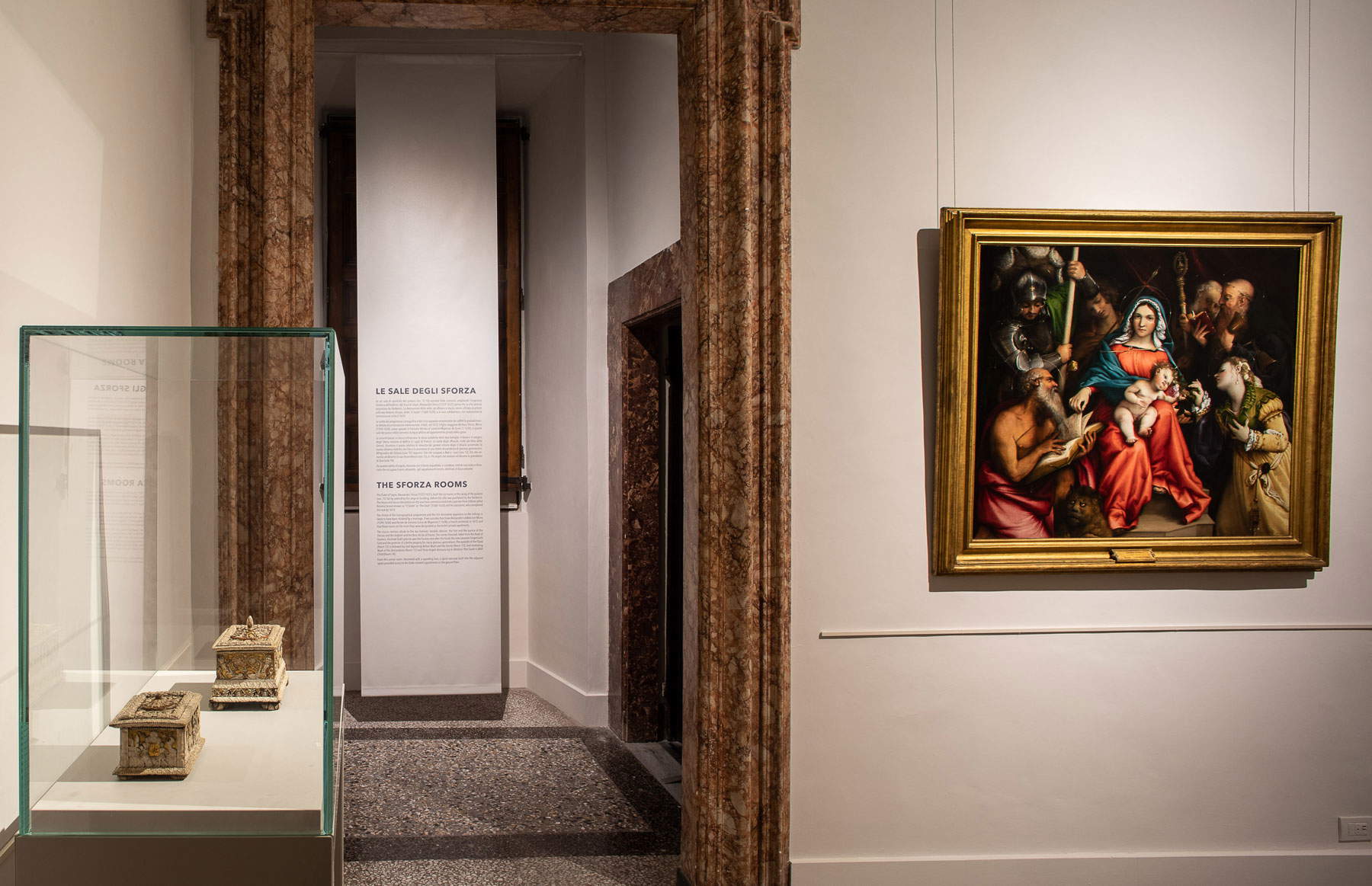
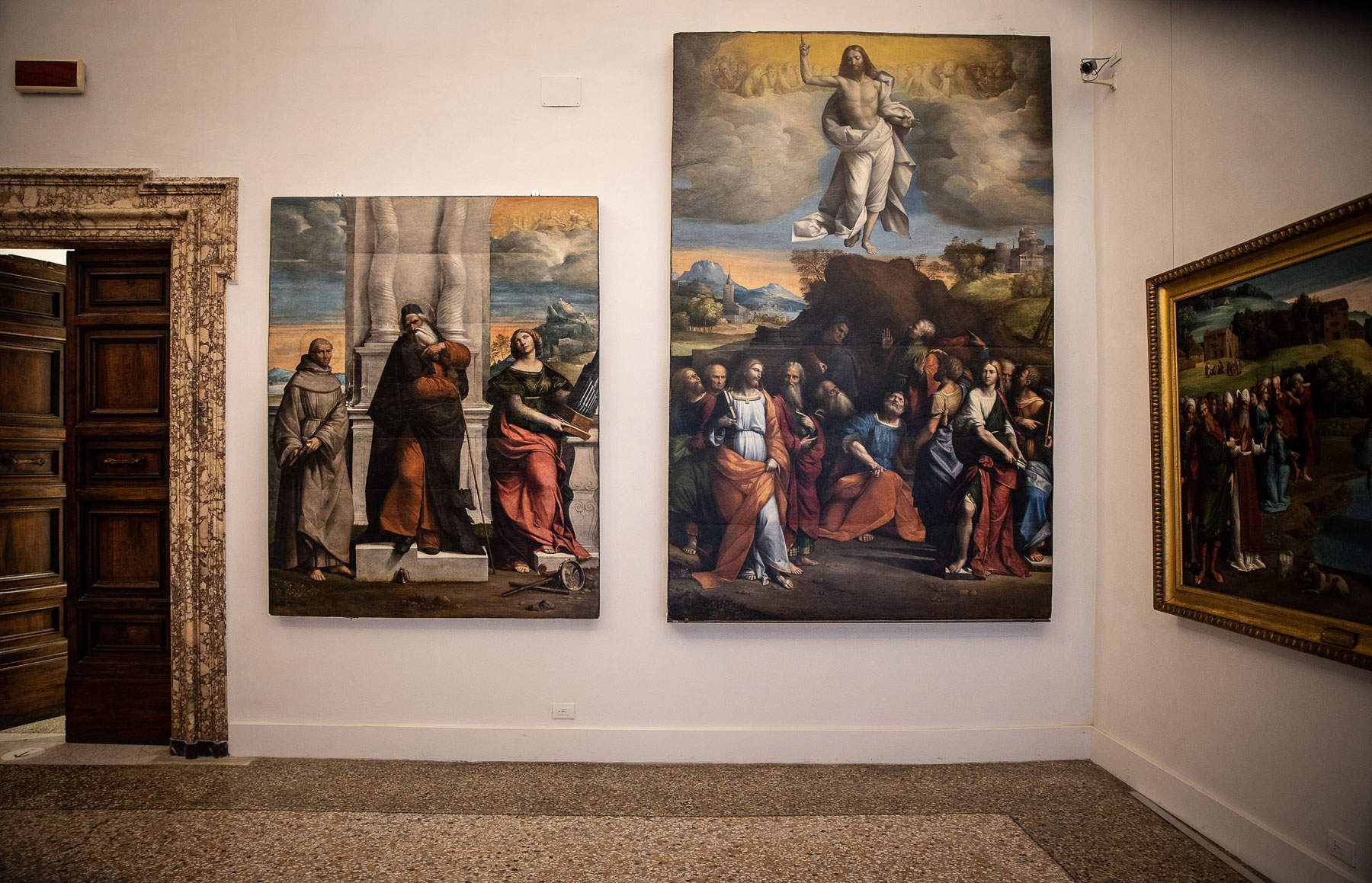
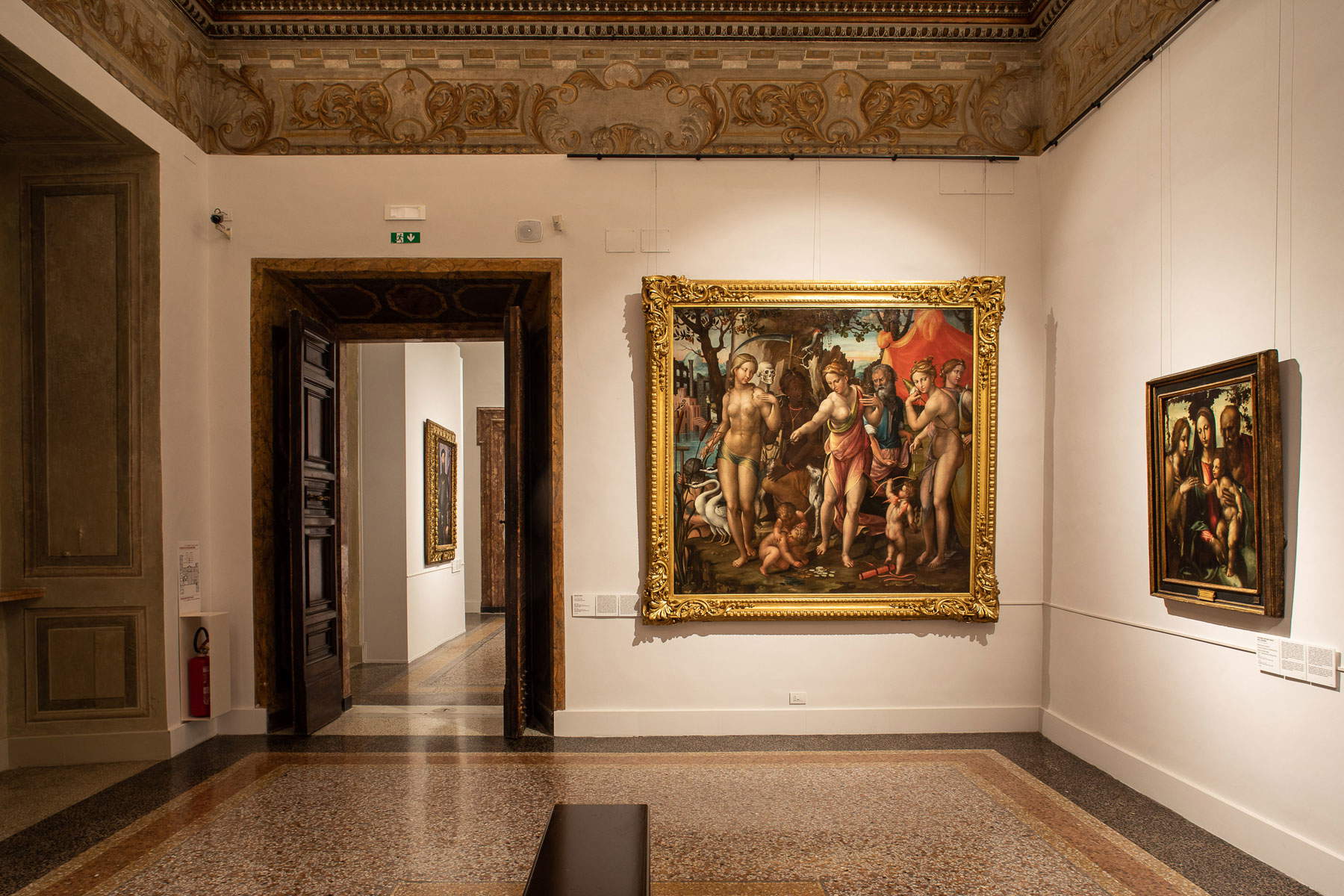
In Room 12, Tradition and Devotion, Andrea del Sarto ’s Holy Family is accompanied by works with the same subject: the Madonna and Child with St. John by Domenico Beccafumi, Perin del Vaga’s Holy Family, and Giulio Romano’s Madonna Hertz. This is the room that illustrates the devotional painting of the 16th century. In fact, although sixteenth-century painting witnesses the birth and gradual establishment of new genres, such as the individual portrait, the historical scene, the mythological fable, and the landscape, still dominating artists’ production is religious painting. The very dynamics of production and commissioning are deeply linked to this cultic function of images, which represents a long-lasting anthropological phenomenon, in substantial continuity with the medieval Christian tradition, as much on the level of public commissions as for works of private destination. Institutions, practices and rituals of personal and family devotion thus continue to fuel a copious production of religious works of domestic and often small-scale destination. Objects of prayer, meditation, and edification, as well as furnishings: material markers of social status, testimonies of culture and attestations of taste. For artists of the time, the devotional genre thus delineated a field not only of exercise but also of experimentation, in which the constraints of iconographic tradition stimulated innovative solutions and novel inventions. Licona of the Virgin and Child becomes a canonical theme with which to measure the new resources of painting, without renouncing the now millennia-old deposit of a symbolic language, in search of a more affective relationship with the viewer, who is no longer just a devotee, but is also, and increasingly, a sophisticated connoisseur.
Room 13 is entirely dedicated to Lorenzo Lotto. This great artist transformed the traditional picture of domestic devotion into a kind of magical speculum perfectionis, a mirror of the perfection of the image, and at the same time perfection of the model of conduct and meditation that it evokes in the beholder and reflector, as seen in the Mystic Marriage of St. Catherine with Saints Jerome, George, Sebastian, Anthony Abbot and Nicholas of Bari. The work was in fact made to be placed in the bedroom of newlyweds Marsilio and Faustina Cassotti, who had already commissioned Lotto to paint their double marital portrait in Bergamo (now in the Prado Museum in Madrid). It is therefore a marriage that limmagine rightly celebrates, albeit a mystical marriage, that between Christ and St. Catherine of Alexandria. Presiding over and blessing the wedding is Mary, who shows the two ways of the Lord: that of the strenuous erudition of Jerome, translator of the Bible, and that of the loving charity of Catherine, who brings her ringed hand to her breast, on her barely unfastened bodice. In the background, the balance is reversed: on the right the aged Nicholas and Anthony Abbot are absorbed in reading, while on the left the martyrs Sebastian and George, also wearing lanello, remind us that the passion for Christ is not without thorns, like the rose that lovers exchange, and that the transport of feelings requires self-mastery, as indicated by the hieroglyphic carved on the saint’s cameo. Accompanying the painting are two pastille caskets from the Venetian-Ferrarese area of the early 16th century.
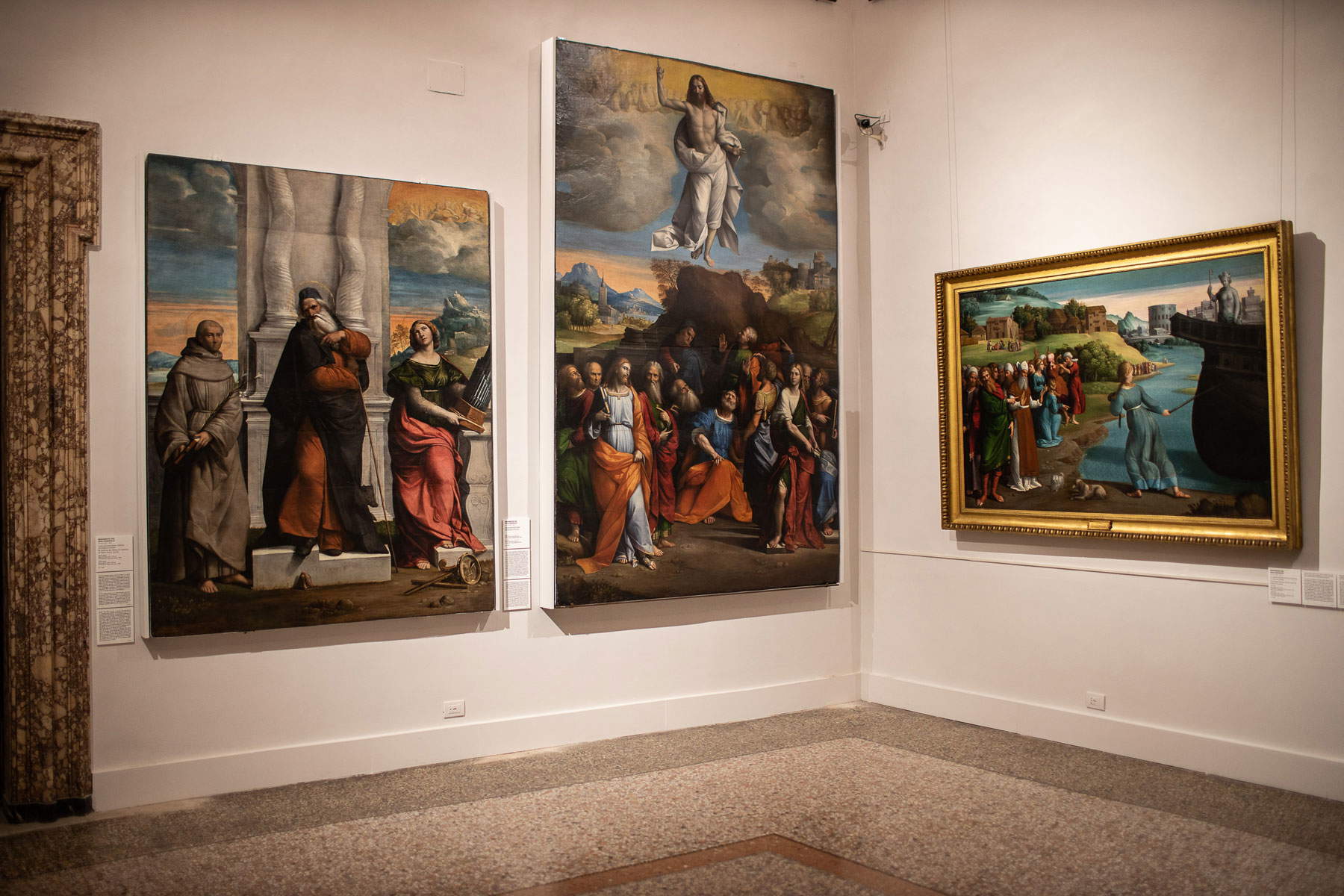



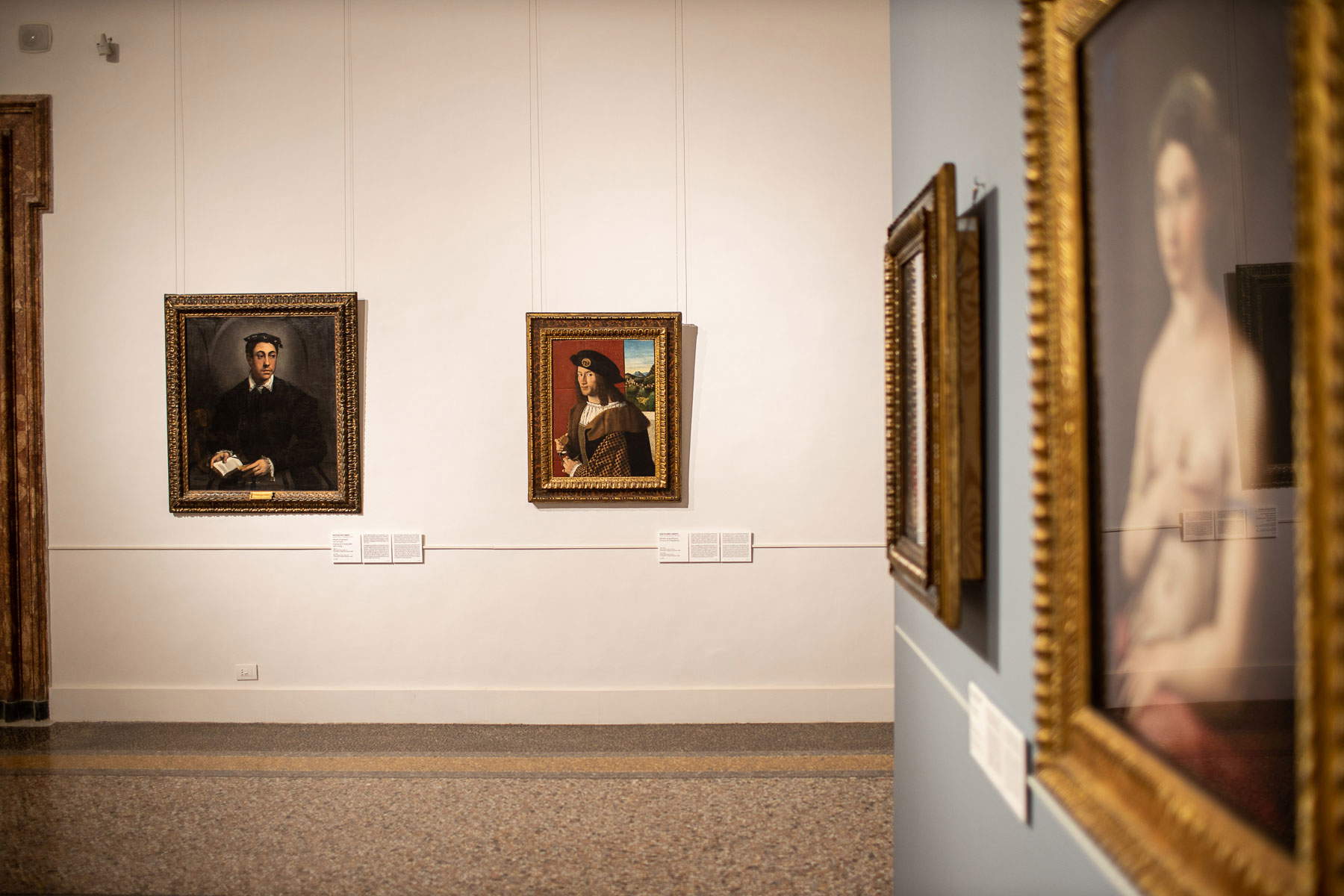
We continue in Room 14, centered on Ferrara painting. Ducal Ferrara is one of the major centers of the Italy of courts, a geography of art, in which centers and peripheries give rise to a complex and lively dynamic, made up of ambitions, rivalries, jealousies and comparisons at least as much as of relationships, exchanges, loans and mutual influences. The refined ideals cultivated within the Este court, the multiplicity of antiquarian interests, the literary and chivalric culture, especially marked by the presence of the tutelary deity of Ludovico Ariosto, the activity of foreign painters such as Giovanni Bellini and Titian, all contribute to creating that characteristic environment and atmosphere in which the imaginative, refined and sometimes bizarre inventions of Garofalo and Dosso Dossi are born and inscribed. Room 15, on the other hand, is dedicated to the Sienese sixteenth century: repository of an extraordinary legacy, which marked its artistic identity from the Middle Ages to the age of early Humanism, Siena became in the sixteenth century a receptacle and a crossroads of figurative languages of different intonation and declension. Until the middle of the century, when the city was conquered by the Florentines and passed under the influence of the Medici duchy, the patronage of civic and religious institutions, those of the republic and those of the aristocracy (particularly during the rule of the powerful Petrucci family) fostered an artistic season rich in new ferments and open to a varied and composite culture. The most prominent figures in this context are the almost contemporary ones of Sodoma and Domenico Beccafumi. The former was an extravagant character, as the sources recall and as his nickname already suggests: thanks to his Milanese, Florentine and Roman experiences, he imported to Siena a particular reinterpretation of Leonardo’s lardish lesson and at the same time an updated classical and antiquarian culture. With Beccafumi, the models of Tuscan painting acquire an eccentric and elegant character, and are recast in a decidedly peculiar idiom, in terms of design, color and luminism.
Room 16, is titled The Renaissance Gaze and delves into the genre of the portrait, giving an overview of the interest in the representation of the individual that emerges precisely in the 16th century. In the portrait of the time, there is a growing desire for affirmation and representation of one’s identity, which should be understood in the double sense of the term, that is, not so much as absolute individuality, but rather as conformity, belonging, recognizability. Hence the formation of specific typologies, with their recurring iconographies and markings: from the ritual cipher of the ruler to the tools of the humanist, from the affected pose of the gentleman to the ostentatious rhetoric of the darmi man. These include that of the artist himself, who sometimes, however, dares and defies conventions and clichés, like Raphael. The room features some of the National Galleries’ most celebrated works, from Raphael’s Fornarina to Bronzino’s Portrait of Stephen IV Colonna, from Piero di Cosimo’s Mary Magdalene to Hans Holbein’s attributed HenryVIII, along with portraits by Niccolò dellAbate, Quentin Metsys and Bartolomeo Veneto.

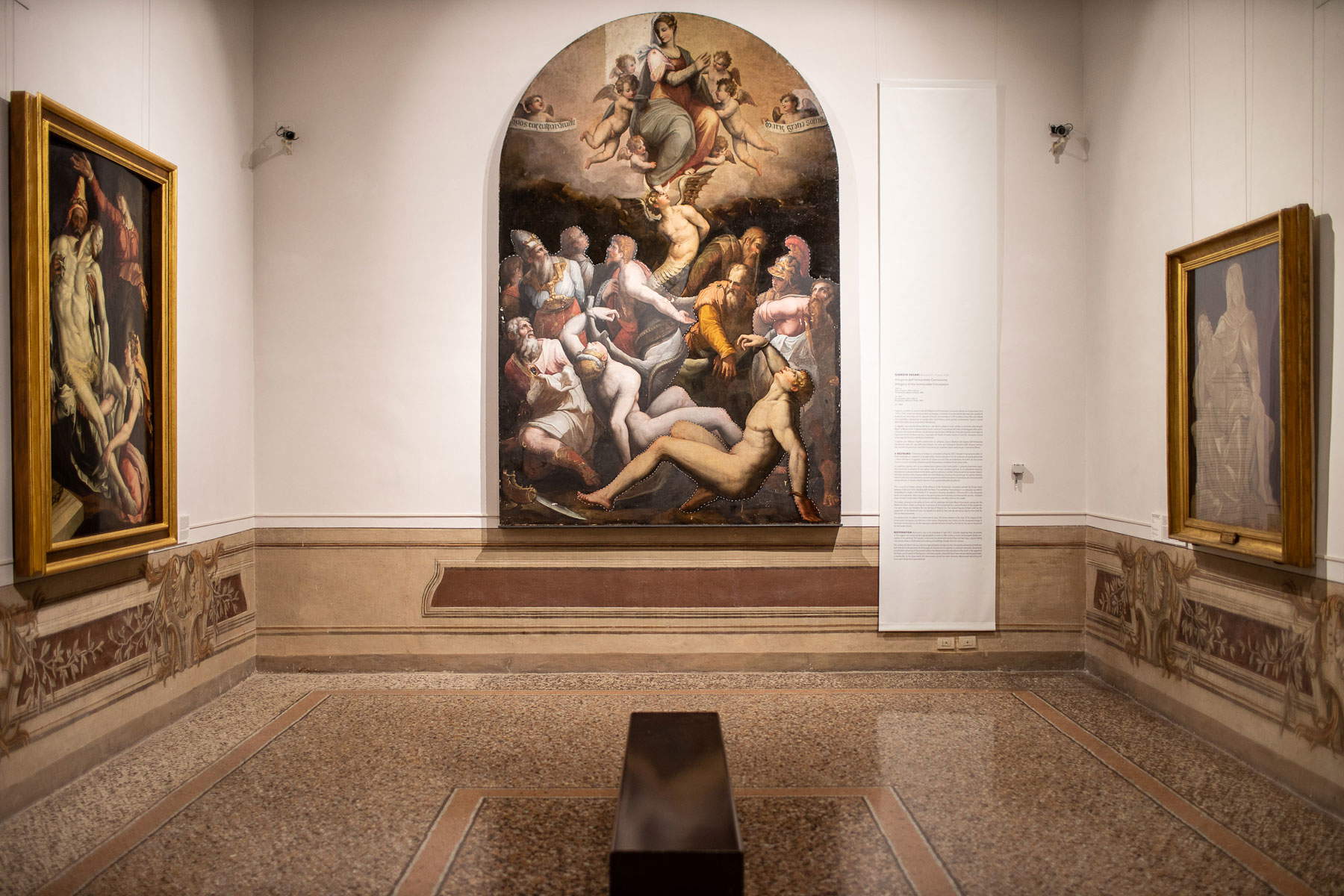

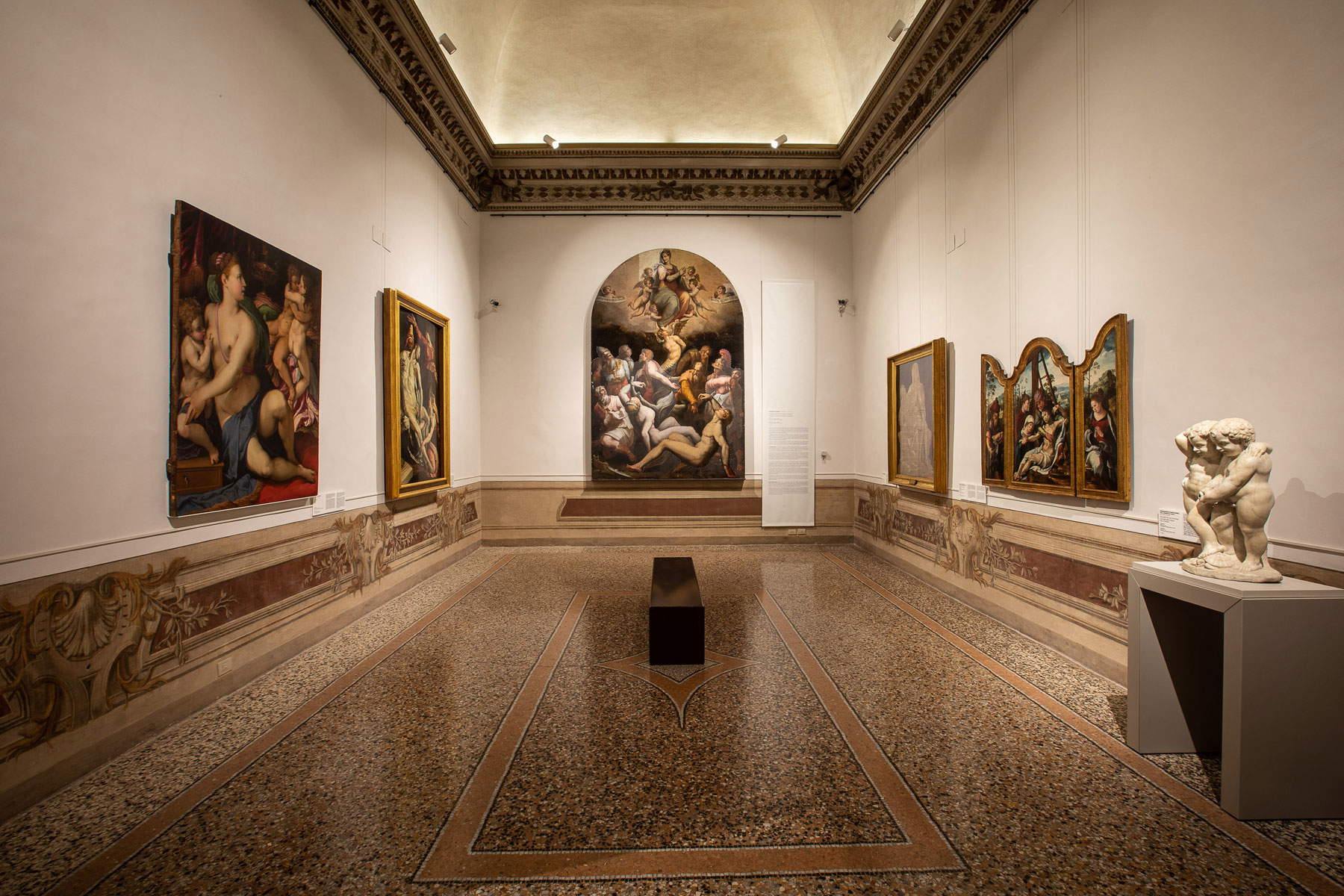
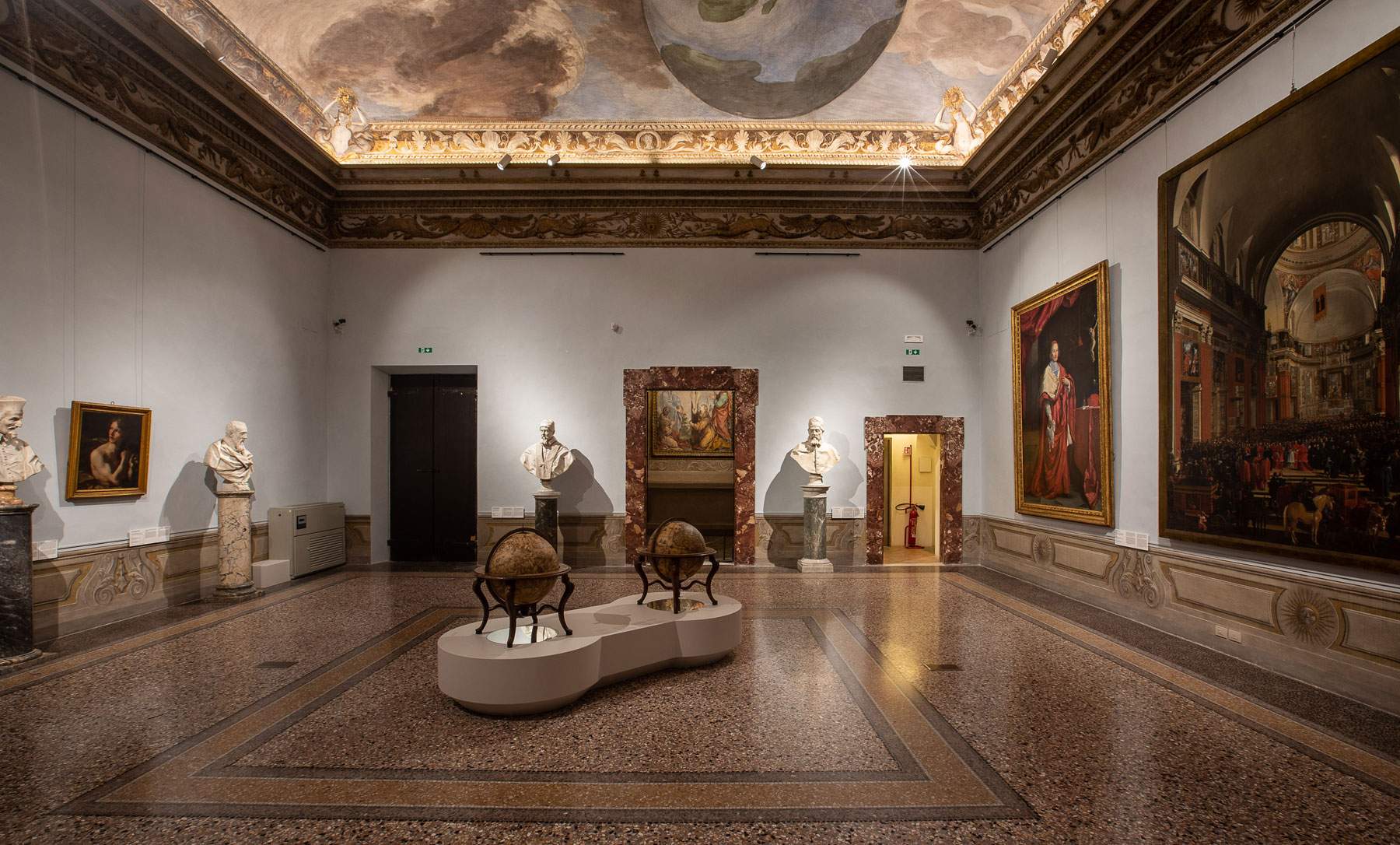
Continuing on to Room 17, dedicated to the painting of the Central Italian Manner, the large altarpiece by Giorgio Vasari and workshop with theAllegory of the Immaculate Conception, which will be exceptionally presented to the public during the first two weeks of the exhibition, has been recovered from storage at the State Museum of Arezzo, before undergoing delicate restoration at the end of which the work will be remounted alongside those by the Master of the Madonna of Manchester, the follower of Maarten van Heemskerck, Daniele da Volterra, Jacopino del Conte, Francesco Salviati and Pierino da Vinci. The itinerary concludes in Room 18, the Sacchi Room, also known as the “Divine Wisdom” room: here, as if to evoke its relevant original function as the highest symbolic representation of Prince Taddeo Barberini’s apartments, the works on display are intended to illustrate and present the protagonists of the Barberini family, with painted and sculpted portraits of Urban VIII and his grandsons by Gian Lorenzo Bernini, Giuliano Finelli, and Lorenzo Ottoni. In the center of the room are the two Globes of the celestial and terrestrial spheres by Matthäus Greuter, which evoke, although their provenance is not certain, the Barberini family’s keen interest in objects related to the new optical, physical, astronomical and, in this case, cartographic disciplines. Palazzo Barberini is, after all, the image, the portrait of the Barberini, or rather, more properly, the deputed place of the portraits of the Barberini, which the family provided to multiply out of all proportion, practicing a real cult of their image and thus aspiring to transform it into a cult image, in the literal sense of the term. How else can one explain the insistent and continuous interest, handed down from generation to generation, in a gallery of ritual effigies that populates the palaces and residences of the family, in which appear not only the protagonists of the present, but also the ancestors of a past that is obviously desired to be worthy and glorious? It is the ideologically modern reinterpretation of the ancient ius imaginum of the Romans, the cult of dynastic portraits, and perhaps it is no coincidence that the famous sculpture of the so-called Togato (now in the Museo della Centrale di Montemartini in Rome), which is an explicit tribute to the ancestors’ effigies, was one of the pride of the Barberini’s classical statuary collection in the 17th century. But this iconographic and autobiographical radiation cuts across different figurative forms and genres. In the Barberini’s strategic design of self-representation, even abstract and conceptual allegory, typical of Baroque poetic imagery, can become a celebration of the person, first and foremost, of course, of the person of Pope Urban VIII, the true architect of the family’s fortune. And it is precisely the fortunate, admirable conjuncture, astral and historical, of his election that the vault of Divine Wisdom frescoed by Andrea Sacchi in 1630 is intended to commemorate.
Palazzo Barberini opens Tuesday through Sunday from 10:00 am to 6:00 pm. Last admission at 5:00 pm. Tickets: Full 10 - Reduced 2 (18-25 year olds). Free: under 18 years of age, schoolchildren and accompanying teachers from the European Union (with prior reservation), students and teachers of Architecture, Humanities (archaeological or historical-artistic address), Conservation of Cultural Heritage and Educational Sciences, Academies of Fine Arts, employees of the Ministry of Culture, ICOM members, tour guides and interpreters on duty, journalists with order card, handicapped persons with accompanying person, school teaching staff, tenured or with fixed-term contract, upon presentation of appropriate certificate on the model prepared by Miur. For all information you can visit the website of the National Galleries of Ancient Art.
 |
| Rome, Palazzo Barberini inaugurates new 16th century rooms, from Raphael to Vasari |
Warning: the translation into English of the original Italian article was created using automatic tools. We undertake to review all articles, but we do not guarantee the total absence of inaccuracies in the translation due to the program. You can find the original by clicking on the ITA button. If you find any mistake,please contact us.